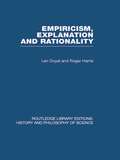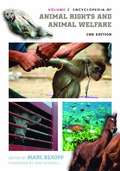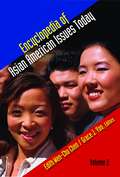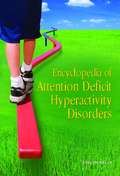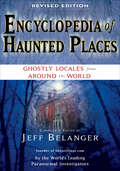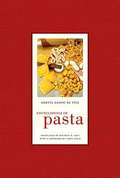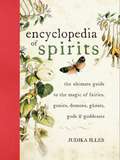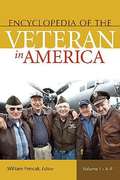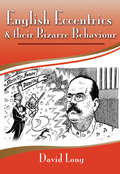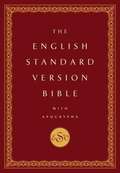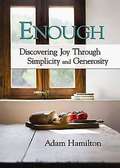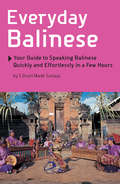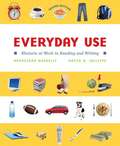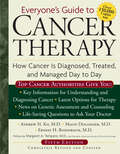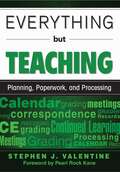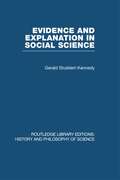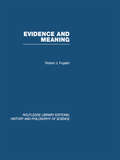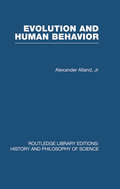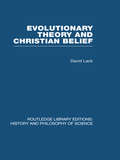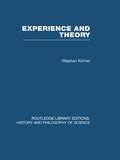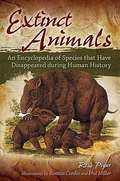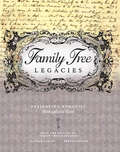- Table View
- List View
Empiricism, Explanation and Rationality: An Introduction to the Philosophy of the Social Sciences (Routledge Library Editions: History & Philosophy of Science)
by Len & Doyal & HarrisOriginally published in 1986. All students of social science must confront a number of important philosophical issues. This introduction to the philosophy of the social sciences provides coherent answers to questions about empiricism, explanation and rationality. It evaluates contemporary writings on the subject which can be as difficult as they are important to understand. Each chapter has an annotated bibliography to enable students to pursue the issues raised and to assess for themselves the arguments of the authors.
Encyclopaedia of Indian Literature, Volume I
by Indra Nath ChoudhuriThe thread of commonality like the quest for the spiritual realm, ethnic, religious and regional identities that find expression in different languages forms the basis of this volume.
Encyclopedia of Animal Rights and Animal Welfare
by Marc BekoffBekoff (U. of Colorado, Boulder) presents an updated reference for students, researchers, and general readers covering the full scope of animal rights and animal welfare from a global, interdisciplinary perspective. Thoroughly revised to reflect developments since publication of the first edition 11 years ago, the text has been expanded from a one- to two-volume publication. It contains 207 entries, by 150 international experts, covering an array of topics, from dog fighting to endangered species in zoos, animals as disease carriers, conservation ethics, and veganism. The second edition features a number of entries on various cultural and religious views of animals, and the latest research on animal cognition and sentience. Each entry offers a brief summarization of the issue and includes a list of publications for further reading. The text also includes a new foreword by Jane Goodall, a chronology of historical events, and a list of print and online resources. Annotation c2010 Book News, Inc., Portland, OR (booknews.com)
Encyclopedia of Asian American Issues Today, Volume 1
by Edith W. Chen Grace J. YooEncyclopedia of Asian American Issues Today is the first major reference work focused on the full expanse of contemporary Asian American experiences in the United States. Drawing on over two decades of research, it takes an unprecedented look at the major issues confronting the Asian American community as a whole, and the specific ethnic identities within that community--from established groups such as Chinese, Japanese, and Korean Americans to newer groups such as Cambodian and Hmong Americans.Across two volumes, Encyclopedia of Asian American Issues Today offers 110 entries on the current state of affairs, controversies, successes, and outlooks for future for Asian Americans. The set is divided into 11 thematic sections including diversity and demographics; education; health; identity; immigrants, refugees, and citizenship; law; media; politics; war; work and economy; youth, family, and the aged. Contributors include leading experts in the fields of Asian American studies, education, public health, political science, law, economics, and psychology.
Encyclopedia of Asian American Issues Today, Volume 2
by Edith W. Chen Grace J. YooEncyclopedia of Asian American Issues Today is the first major reference work focused on the full expanse of contemporary Asian American experiences in the United States. Drawing on over two decades of research, it takes an unprecedented look at the major issues confronting the Asian American community as a whole, and the specific ethnic identities within that community--from established groups such as Chinese, Japanese, and Korean Americans to newer groups such as Cambodian and Hmong Americans.Across two volumes, Encyclopedia of Asian American Issues Today offers 110 entries on the current state of affairs, controversies, successes, and outlooks for future for Asian Americans. The set is divided into 11 thematic sections including diversity and demographics; education; health; identity; immigrants, refugees, and citizenship; law; media; politics; war; work and economy; youth, family, and the aged. Contributors include leading experts in the fields of Asian American studies, education, public health, political science, law, economics, and psychology.
Encyclopedia of Attention Deficit Hyperactivity Disorders
by Evelyn B. KellyScience writer Kelly provides information on the controversial family of disorders for high school and college students, parents, teachers, and other non-specialists. She is not pushing a particular theory or approach, but sets out arguments and claims proffered by proponents of them. Medical information is referenced to researchers and Web sites. A sampling of topics shows the anticonvulsive medication carbamezepine, physician and writer Heinrich Hoffman, industrial and environmental toxins, and teaching children with ADHD. Entry-specific lists for further reading refer to the bibliography. There is little cross-referencing. Annotation c2009 Book News, Inc., Portland, OR (booknews.com)
Encyclopedia of Haunted Places, Revised Edition: Ghostly Locales From Around the World
by Jeff BelangerNow updated:Information on hundreds of supernatural sites, compiled by dozens of the world&’s leading paranormal investigators. For years, paranormal investigative groups have been studying their local ghosts with scientific equipment as well as with psychics and seances. This directory is a repository of some of their most profound cases. From across the United States, Canada, and many spots around the globe, ghost investigators tell of their sometimes-harrowing experiences, share their research, and give readers an overview of both well-known and obscure haunted locales. From private residences to inns and restaurants, battlefields to museums and libraries, graveyards to churches, Encyclopedia of Haunted Places offers supernatural tourists a guide to points of interest through the eyes of the world&’s leading ghost hunters. Research notes, location background, firsthand accounts, interviews with leading paranormal researchers, and photographs featuring ghostly manifestations comprise the hundreds of haunted listings in this directory. Now in its second edition, the Encyclopedia of Haunted Places has been updated with dozens of new listings, new information on existing haunts, and a comprehensive directory of paranormal investigators.
Encyclopedia of Pasta
by Darra GoldsteinThis book is about traditional Italian pasta -- the long, the short, the layered, the rolled, the stretched, and the stuffed, a unique Italian heritage.
Encyclopedia of Spirits: The Ultimate Guide to the Magic of Fairies, Genies, Demons, Ghosts, Gods and Goddesses (Witchcraft & Spells)
by Judika IllesEnter the World of Spirits! The Encyclopedia of Spirits is a comprehensive and entertaining A to Z of spirits from around this world and the next. Within these pages meet love goddesses and disease demons, guardians of children and guardians of cadavers. Discover Celtic goddesses and goddesses of the Kabbalah, female Buddhas, African Powers, Dragon Ladies, White Ladies, Black Madonnas, the Green Man, the Green Fairy, lots and lots of ghosts, djinn, mermaids, fairies, and more. From the beneficent to the mischievous, working with these spirits can bring good fortune, lasting love, health, fertility, revenge, and relief. Discover: The true identities of over one thousand spirits (as well as their likes and dislikes) How to communicate with specific spirits for your own benefit How to recognize these spirits when they manifest themselves The mythological and historical events associated with specific spirits The colors, days, numbers, and astrological signs associated with specific spirits The Encyclopedia of Spirits also provides an overview of the role of spirit communication throughout history and a general guide to working with spirits. No matter what your life's problems or desires, this book can guide you to the right spirits who can help fulfill your dreams. For the spiritual adept, the amateur, or the simply curious, the Encyclopedia of Spirits will inform, inspire, and delight.
Encyclopedia of the Veteran in America
by William PencakA comprehensive encyclopedia that describes the experiences of American veterans from the Revolutionary War to the present.
English Eccentrics & Their Bizarre Behaviour
by David LongJust why has England been blessed with so many quirky people? A delightful look at this phenomenon from an award–winning and &“superbly talented&” author (Sunday Express). From the eighteenth-century judge who insisted all babies were born with tails that were secretly removed by midwives to the twentieth-century schoolmaster who left twenty-six thousand pounds to the Lord Jesus Christ (upon His return and satisfactory proof of His identity), England is famed for its colorful characters. In this exploration of eccentrics through history, David Long studies these beloved real-life figures and their bizarre legacy, including the many strange buildings they left behind—not just follies but re-creations of exotic palaces. He also discusses why eccentrics still spark a continuing fascination, and highlights the most notable (not just the most famous) in his entertaining essays. In addition to a useful timeline that sets the scene, this book reveals where readers can see the long-lasting legacy of the eccentric for themselves, from Brighton Pavilion to the follies at Stourhead and Castle Howard. &“A new book by David Long is always something to cherish.&” —Londonist
English Standard Version Bible with Apocrypha
by Oxford University PressThe English Standard Version Bible captures as far as possible the precise wording of the original biblical text and the personal style of each Bible writer, while taking into account differences of grammar, syntax, and idiom between current literary English and the original languages. The ESV thus provides an accurate rendering of the original texts that is in readable, high quality English prose and poetry. This Bible has been growing in popularity among students in biblical studies, mainline Christian scholars and clergy, and Evangelical Christians of all denominations.<P><P> Along with that growth comes the need for the books of the Apocrypha to be included in ESV Bibles, both for denominations that use those books in liturgical readings and for students who need them for historical purposes. More Evangelicals are also beginning to be interested in the Apocrypha, even though they don't consider it God's Word. The English Standard Version Bible with the Apocrypha, for which the Apocrypha has been commissioned by Oxford University Press, employs the same methods and guidelines used by the original translators of the ESV, to produce for the first time an ESV Apocrypha. This will be the only ESV with Apocrypha available anywhere, and it includes all of the books and parts of books in the Protestant Apocrypha, the Catholic Old Testament, and the Old Testament as used in Orthodox Christian churches. It has a lovely pre-printed case binding, and includes a full-color map section, a table of weights and measures used in the Bible, and many other attractive features.<P> The English Standard Version Bible with Apocrypha is certain to become the preferred Bible in more conservative divinity schools and seminaries, where the Apocrypha is studied from an academic perspective. And it answers the need of conservative Christians in general for a more literal version of these books.
Enough: Discovering Joy Through Simplicity and Generosity
by Adam Hamilton'Tis the gift to be simple, 'tis the gift to be free. - 9th-century Shaker song. Money has great power in our lives and, when used wisely, helps us meet our goals, provide for our needs, and fulfill our life purpose. But in recent years, many of us ignored this when managing and spending our money. We found ourselves spending tomorrow's money today. The result of all of this was not greater happiness and satisfaction, but greater stress and anxiety. Enough is an invitation to rediscover the Bible's wisdom on prudent financial practices. Find the keys to experiencing contentment, overcoming fear, and discovering joy through simplicity and generosity. This book could change your life by changing your relationship with money.
Everyday Balinese
by I Gusti SutjajaThis is a concise and user-friendly guide to learning basic BalineseEveryday Balinese is targeted to anyone who wishes to learn to speak colloquial Balinese. There are 23 lessons in the book, each with a dialogue that centers around the Balinese daily life. The dialogue is presented twice: The first version representing the lumrah or common Balinese; the second the alus or refined Balinese. Both versions are exactly the same grammatically; the difference lies in the word choice. Lumrah or common words are used by participants of equal social status in a conversation, and it reflects intimacy and informality among the users. Alus or refined words are associated with distancing and formality among users in a conversation.Each lesson contains a section on the grammar an word function, as well as a list of words in both the lumrah and alus forms, followed by their Indonesian and English equivalents. Each lesson ends with a section on sentence construction-how to use the structures taught to make simple sentences.The book has a pronunciation guide at the front, and a section or greeting, ordinal numbers and a handy dictionary at the end. The dictionary is arranged alphabetically by Balinese, followed by Indonesian and English equivalents.
Everyday Balinese
by I Gusti SutjajaThis is a concise and user-friendly guide to learning basic BalineseEveryday Balinese is targeted to anyone who wishes to learn to speak colloquial Balinese. There are 23 lessons in the book, each with a dialogue that centers around the Balinese daily life. The dialogue is presented twice: The first version representing the lumrah or common Balinese; the second the alus or refined Balinese. Both versions are exactly the same grammatically; the difference lies in the word choice. Lumrah or common words are used by participants of equal social status in a conversation, and it reflects intimacy and informality among the users. Alus or refined words are associated with distancing and formality among users in a conversation.Each lesson contains a section on the grammar an word function, as well as a list of words in both the lumrah and alus forms, followed by their Indonesian and English equivalents. Each lesson ends with a section on sentence construction-how to use the structures taught to make simple sentences.The book has a pronunciation guide at the front, and a section or greeting, ordinal numbers and a handy dictionary at the end. The dictionary is arranged alphabetically by Balinese, followed by Indonesian and English equivalents.
Everyday Use: Rhetoric at Work in Reading and Writing (2nd Edition)
by David A. Jolliffe Hephzibah RoskellyBrief and accessible, this rhetoric teaches students to read closely, critically, and rhetorically, and to write effectively to achieve their rhetorical goals. Everyday Use answers the basic question, "What is rhetoric?" It shows rhetoric as set of activities-reading, writing, speaking, listening-that all intellectually engaged people participate in every day. And it shows that a knowledge of rhetoric is essential in understanding how written and spoken texts influence thought and action every day, in private and in public forums, for good or ill. By demystifying rhetoric and rescuing it from common public misconceptions,Everyday Use equips students to be effective communicators in the academic world and in everyday life.
Everyone's Guide to Cancer Therapy: How Cancer Is Diagnosed, Treated, and Managed Day to Day
by Andrew Ko Malin Dollinger Ernest H. Rosenbaum&“Written by two oncologists . . . this authoritative but readable reference stands out . . . as a uniquely comprehensive, thorough source of up-to-date information&” (Library Journal). For more than thirty years, Everyone&’s Guide to Cancer Therapy has been the definitive resource for anyone confronting a cancer diagnosis. The revised and updated fifth edition draws on the latest research, information, and advice from more than 100 top oncology specialists. Equally informative and accessible, this comprehensive book helps cancer patients and their caregivers navigate through diagnosis, treatment, and supportive care. Topics include: * Information on recently approved targeted therapies for various cancer types * The newest strategies in cancer diagnosis and prevention * Cancer biology: translating scientific discoveries into meaningful advances for patients * Supportive care and complementary approaches
Everything but Teaching: Planning, Paperwork, and Processing
by Stephen J. ValentineLearn the 7 Imperatives for managing the "other" work of a teacher!Every teacher knows that what happens before and after class is as important as what happens during class. This accessible resource gives all teachers indispensable tips for managing professional priorities outside the classroom and saving energy for the most essential part of their work: teaching students.Real-life vignettes, planning sheets, and other templates, illustrate how to master the multitasking demands of the teaching life, including: Planning time wisely Tailoring grading practices to provide clear feedback Holding productive meetings with students, parents, or colleagues Keeping and using records effectively Corresponding with grace, tact, and detail Processing information and refining procedures Embracing new professional learning opportunitiesWithout good planning and organization, even the best teachers may not be able to effectively reach their students, and the classroom can suffer. Using this invaluable guide, teachers can develop their professional skills. First year and veteran teachers alike can find new ideas for the business of running a class so that they can focus on the most important thing: teaching.
Evidence and Explanation in Social Science: An Inter-disciplinary Approach (Routledge Library Editions: History & Philosophy of Science)
by Gerald Studdert-KennedyOriginally published in 1975. The main concern of this book is the nature of the gap between the theoretical issues, raised at an abstract level by social scientists, and their facts, the material organized in an empirical analysis. The author draws on material from several disciplines to explore the contributions of social science theory to historical insight.
Evidence and Meaning: Studies in Analytic Philosophy (Routledge Library Editions: History & Philosophy of Science)
by Robert J FogelinOriginally published in 1967. This is an examination of warrant statements – statements which indicated something about the grounds on behalf of some further judgement, choice or action. The first part of the study is concerned with the role of warrant statements in theoretical discourse; while the second part concerns their role in practical discourse. Also examined are necessity, probability, knowing, seeing and the complex of terms which allow us to introduce an argumentative structure into discourse.
Evolution and Human Behaviour: An Introduction to Darwinian Anthropology (Routledge Library Editions: History & Philosophy of Science)
by Alex AllandOriginally published in 1967. This reprints the second edition of 1973, revised and expanded. Evolution and Human Behaviour considers man’s biological and cultural development within the framework of Darwinian evolution. Rejecting analogue models of biological evolution common in the social sciences, the author shows how the theory of biological evolution applies to the study of contemporary human behaviour.
Evolutionary Theory and Christian Belief: The Unresolved Conflict (Routledge Library Editions: History & Philosophy of Science)
by David LackOriginally published in 1957. This book is concerned with the conflict between "Darwinism" as the Victorians called it, and Christianity, a conflict here re-stated in modern terms because it so vitally affects our understanding of human nature and human values today. The opening chapter describes the historical background. There is a short account of evolution and the argument over Genesis. The importance of natural selection is stressed, and rival theories as to the means of animal evolution are criticised. Discussions follow on whether the course of evolution has been random or determined, on the argument from design, death in nature, the biologist’s methods and the difficulties in evolutionary ethics.
Experience and Theory: An Essay in the Philosophy of Science (Routledge Library Editions: History & Philosophy of Science)
by Stephan KornerOriginally published in 1966. This volume analyzes the general structure of scientific theories, their relation to experience and to non-scientific thought. Part One is concerned with the logic underlying empirical discourse before its subjection to the various constraints, imposed by the logico-mathematical framework of scientific theories upon their content. Part Two is devoted to an examination of this framework and, in particular, to showing that the deductive organization of a field of experience is by that very act a modification of empirical discourse and an idealization of its subject matter. Part Three analyzes the concordance between theories and experience and the relevance of science to moral and religious beliefs.
Extinct Animals: An Encyclopedia of Species That Have Disappeared During Human History
by Ross PiperA British scholar of natural history, Piper profiles extinct animals within in chronological sections, first during the past century, then two, then five. He pushes the boundary of what can strictly be called history with the next section, to 10,000 years ago, then progresses ever further back to more than 50,000 years ago. The pivotal section focuses on the relatively short period 10,000 to 12,500 years ago, when many believe a mass extinction period began that will eventually be larger than any in the archaeological record. He downplays the Great Human Hunter model of extinction, mentioning climate change, habitat destruction, and other factors as well as predation from humans and others. Photographs are provided of live or preserved individuals for some recent species, but most are illustrated with drawings by Renata Cunha and Phil Miller, along with a few photographs of displayed skeletons. Annotation ©2009 Book News, Inc., Portland, OR (booknews.com)
Family Tree Legacies: Preserving Memories Throughout Time
by Allison Stacy Diane HaddadYour Interactive Family AlbumFrom the editors of Family Tree magazine, this customizable family keepsake is the perfect place to record and share your family's story.Family Tree Legacies helps you keep track of basic information and special memories, including traditions, heirloom histories, family records, newsworthy moments, family migrations and immigrations, old recipes, important dates, and much more. This unique book features:dozens of fill-in pages to record all your essential family informationa fold-out family treespace for mounting photographsa relationship chart to help you trace your ancestrystickers for use throughout the booktips for discovering facts about your family historya comprehensive list of additional resourcesPlus, because of this book's unique binder format, you can literally grow your own family tree by using the included CD to print out new copies of the book's fill-in pages. You can record all your special family moments without ever worrying about running out of space.Family Tree Legacies is a true treasure you can nurture and pass down through the generations.
